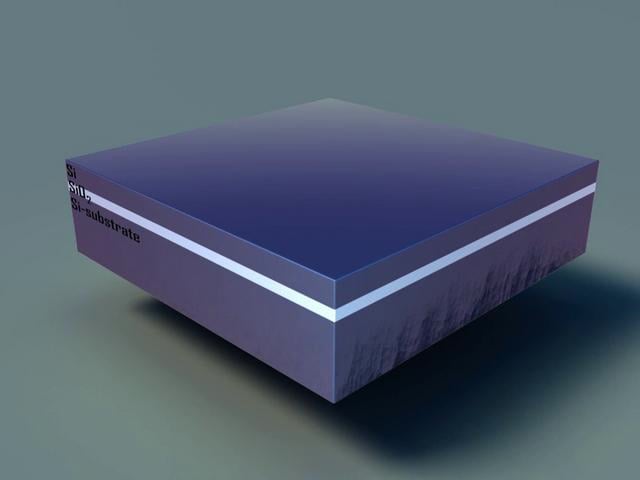The surface structure of a medical implant influences the body's reaction to it. The physical characteristics of the surface (at both micro and macro-level) determine the behaviour of cells: whether they will attach themselves, grow or in the case of stem cells, develop into the required cell type. The University of Twente has now developed a chip that can be used to test the impact of various structures, both simply and on a large scale. The chip, which is the result of six years' work, makes it possible to examine the effect of 2,178 different surface structures in one go. Up until recently, it was standard procedure to study just a few structures at a time. This means that from now on, analysts will be able to identify the surface with the best effect on the cells much more quickly. An article proving that the chip works was published online on the site of the leading scientific journal PNAS on 26 September.
Cells appear to 'read' the surface structure on which they are found rather like Braille. For example, the structure determines how the body cells attach themselves and grow on that structure. Stem cells 'reading' a structure will then specialize in a particular direction. On one structure they may develop into bone cells, for instance, and on another into muscle cells. In certain specific structures the stem cell may remain intact and develop in one of many directions at a later date. But as well as stimulating the desired behaviour in cells, it is also possible to curb undesirable cell behaviour (encapsulating implants, for example). Up until now, testing surface structures to identify the one most suitable for a medical implant has always been a difficult and time-consuming process.
TopoChip
Researchers at the University of Twente have developed a chip (the TopoChip), which can be used to screen large numbers of surfaces for implants swiftly and efficiently. The chip (measuring 2 x 2 cm) comprises 4,356 sections (measuring 290 x 290 microns), with a total of 2,178 different structures, and can be made from any material required.
Cells are 'sown' onto the chip. After having been left to attach and grow, the cells in each section are analysed using fluorescence microscopy and biological markers (biomarkers). The images thus obtained can then be used to identify the surface that will give the best results.
But the TopoChip has other uses besides studying the effect of surface structures on body cells. For example, it can also be used to study the impact of blood platelets or bacteria.
158 million combinations
The structures on the chip are combinations of three basic structures (a circle, a rectangle and a triangle). The researchers have created a library cataloguing 158 million of these combinations. If particular structures turn out to encourage the cells to develop in the required way, the researchers will eventually be able to use the library to produce new TopoChips with cognate structures. This will make it possible to check for structures that could be better suited to the intended goal.
PNAS publication
The researchers have spent six years working on the chip. On 26 September, an article was published on the website of the leading scientific journal Proceedings of the National Academy of Sciences of the United States of America (PNAS), in which they will prove that the TopoChip works.
Materiomics B.V.
This piece of research was led by scientists from the MIRA institute for biomedical technology and technical medicine at the University of Twente. Materiomics B.V. has been set up to bring the technology onto the market. This company will not sell the TopoChip, but will carry out analyses on behalf of its clients to identify the surface structures best suited to their needs. Bernke Papenburg, responsible for the day-to-day running of Materiomics B.V. and one of the original team of researchers, explains: "In principle, we supply the design for the required surface. But we can also help our clients by looking into ways of incorporating the structure into a medical implant, for example."
The researchers were recently awarded a Pre-Seed Valorisation Grant from the Netherlands Genomics Initiative. They will receive subsidy worth 250,000 euros so that they can develop the technology for large-scale commercial use.
Note for the press
For more information or a digital version of the article entitled An algorithm-based topographical biomaterials library to instruct cell fate, please contact the scientific information officer Joost Bruysters (+31 (0)53 489 2773 / +31 (0)6 1048 8228).






